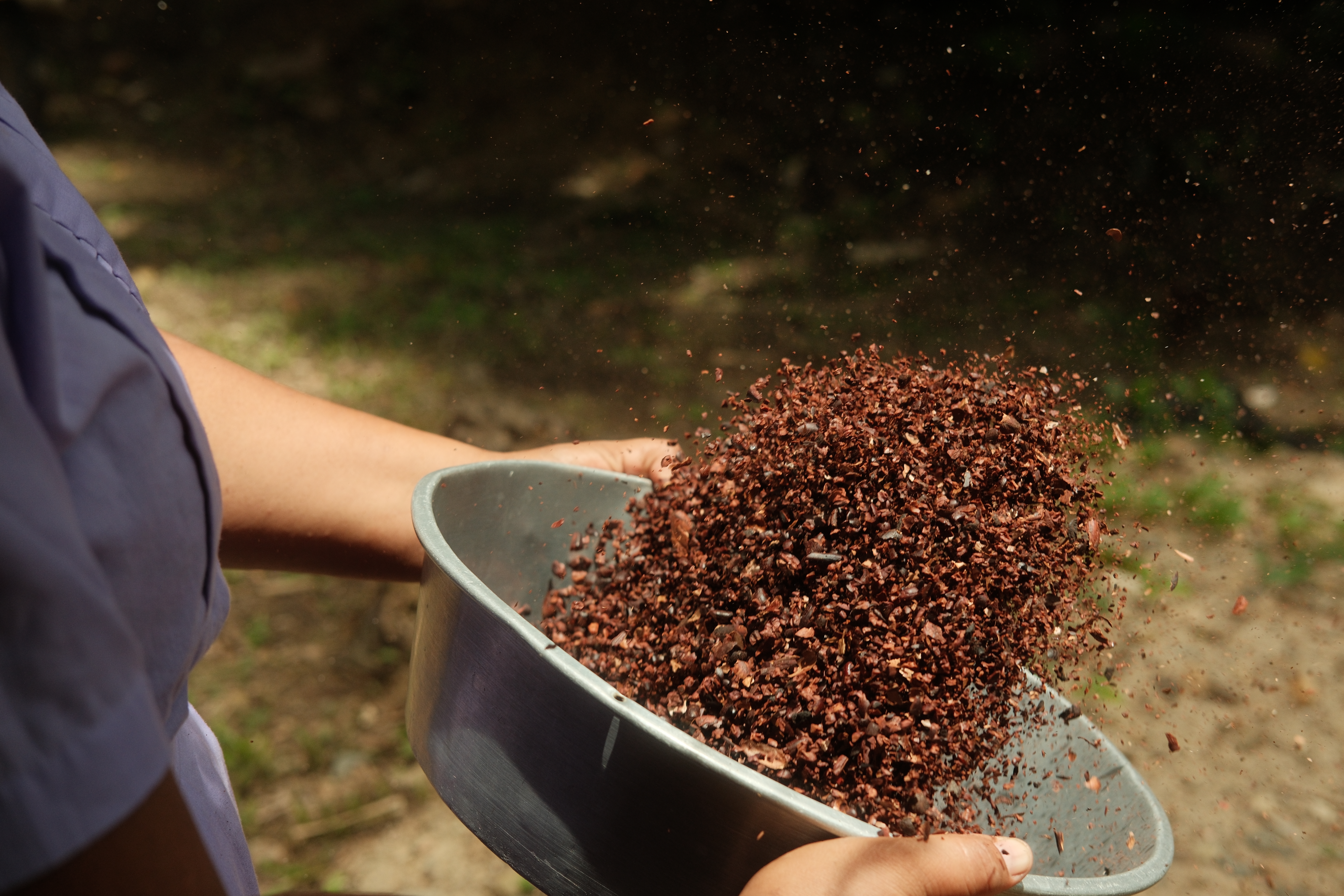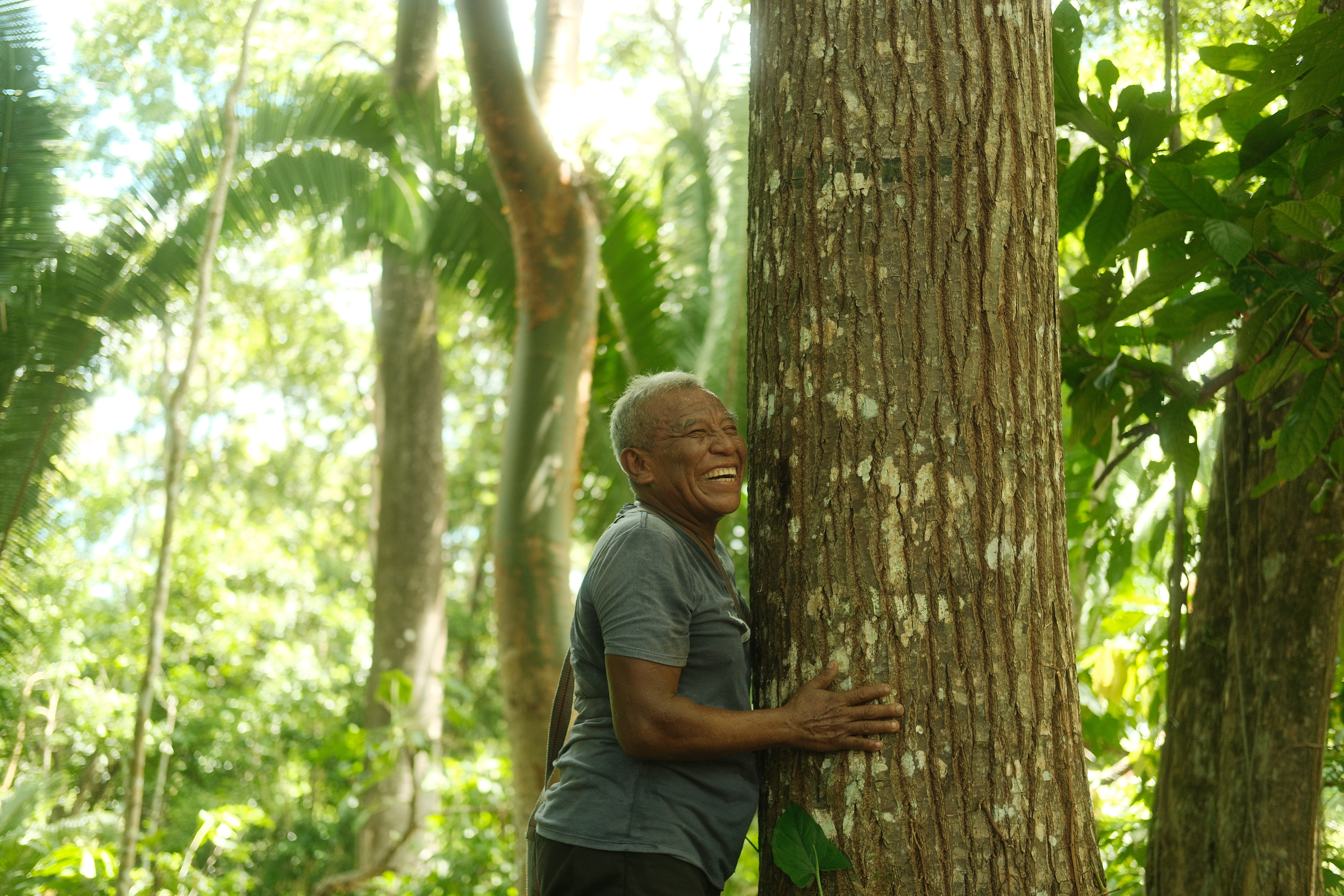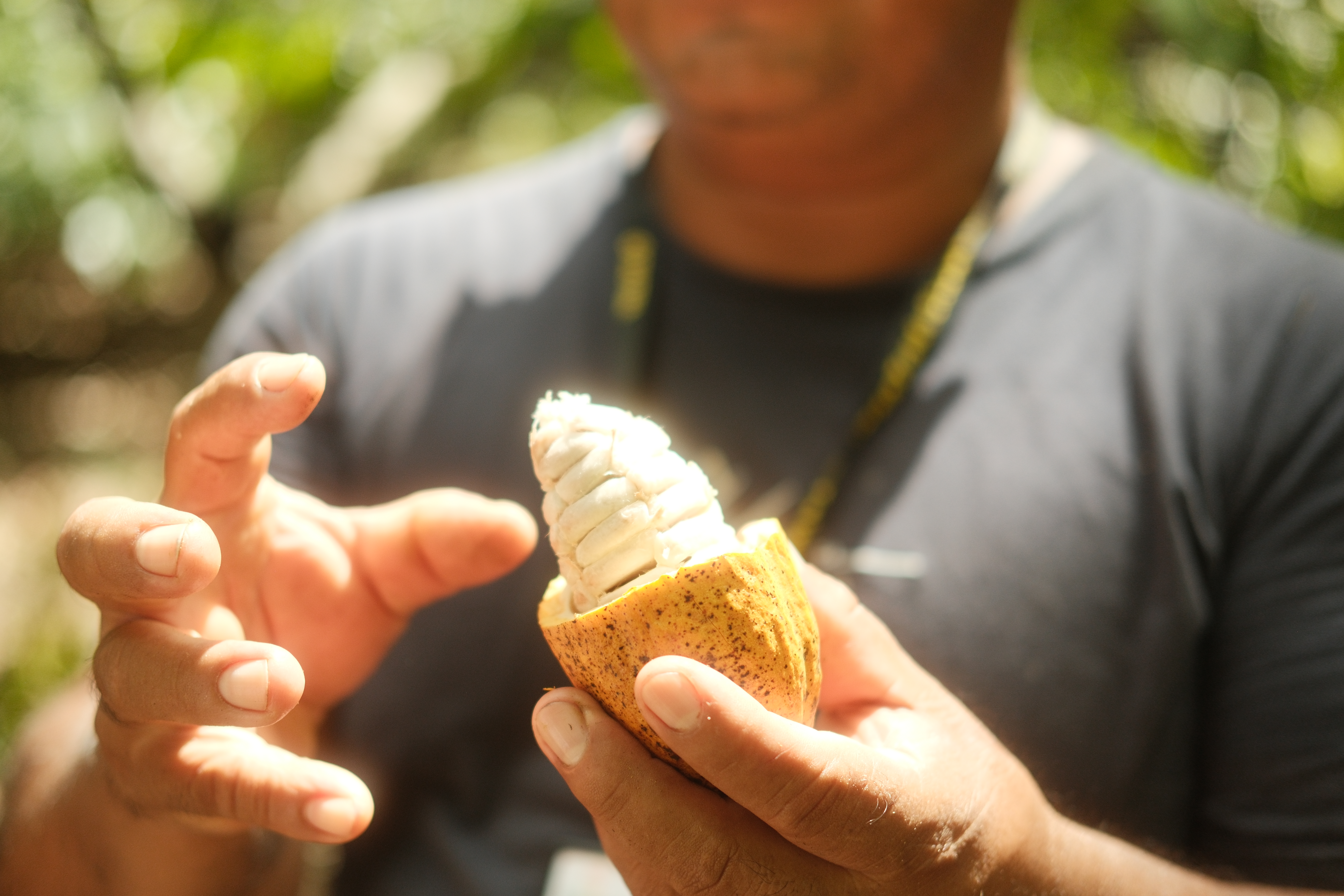Eladio Pop is a wealthy man. Under pockets of golden light shining through the canopy, he looks over the forest he planted 50 years ago with an unassuming treasure: cacao trees.
“Cacao beans is our Mayan gold,” Pop’s son, Felicidados, tells me as we walk through the forest, the humidity adding a glowing sheen of sweat on our skin.
The history of cacao is rich here in Belize, a place often referred to as the “cradle of chocolate.” It is home to some of the earliest archaeological evidence of chocolate in the world, such as a pot with chocolate residue dating back to 600 BC. In pre-Hispanic Mayan culture, cacao beans were used as a form of currency as well as ground into a paste, then mixed with water to create the oldest known form of hot chocolate.
That reverence carries through today. Pop drinks the cacao water of his ancestors every morning before tending to his forest—an energizing and nutrient-rich daily sustenance the 66-year-old credits for his vitality and lack of a “big belly.” Like the rest of the Mayan community in Belize, he doesn’t add milk or sugar, preferring the dark, richly bitter taste of real cacao instead.

Victoria Pop, Eladio’s daughter-in-law, winnows crushed cacao beans. This process uses the wind to blow away the light outer shells of the bean. Victoria will then crush the beans into a paste and stir in hot water to make hot chocolate, a traditional Mayan drink.
Pop is one of about 500 cacao farmers in Belize’s Toledo district, in the southernmost region of the country near the border with Guatemala. The area doesn’t get as much tourism as the rest of the country, but this is the heart of Belize’s chocolate industry. Most farmers here sell raw cacao beans to co-op processors, who then export the product elsewhere, typically the U.S. But a growing number of small-scale chocolatiers are reclaiming their cacao roots by making their own single-origin artisanal product—not only as a draw for tourists but also to export internationally.
Belize is a small player in the cacao trade, despite its close ties to the bean, ranking far below one per cent of the global supply. Côte d’Ivoire and Ghana are the largest exporters of raw cacao beans, while Germany and Belgium are the largest exporters of finished chocolate. But Belizean chocolate has its own distinct character, as the country’s cacao farmers will tell you—a taste as idiosyncratic as Belizean people themselves.
Related stories
- How Local Food Networks Foster Community and Sustainability in B.C.
- Inside the Inventor’s Workshop of a Vancouver Chocolatier
- At Hacienda Patrón, Making Tequila Is Not Just a Business, It’s an Art
Once ripe, a cacao pod turns yellow or red, depending on the variety, but when you break open the husk and extract the seeds from the white flesh—which itself is sweet like candy—they all look the same. Some are sweeter. Some are more sour.
“Here in Belize, we don’t really separate the varieties when we’re harvesting. We blend everything together. And it is that blend that makes Belizean cacao unique,” Felicidados tells me. That’s also why it’s hard to define Belizean cacao: the nuance of sweet to sour is never exact, and the ratio you experience is a matter of chance.
Pop often stops to hug his trees as we walk. “This is life here, thank you very much,” he says to the tree. He replanted about 30 acres of this land, once sparse and flat, as a young man. Now, he walks through verdant tangled woods—a farm disguised as a forest. Among the cacao trees are heliconia, taro, allspice, and cassava plants; banana, coffee, and lemon trees; and towering cedar and mahogany trees. The mix not only feeds his family (his wife and seven grown children) but also ensures the vegetation is diverse and resilient, unlike monoculture crops.

Eladio Pop stops to hug a tree on his cacao farm. The 66-year-old replanted about 30 acres of land nearly 50 years ago with cacao trees and a mix of vegetation to keep the forest healthy. “Plants need you, too,” he says.
He lets nature do most of the work for him: leafcutter ants prune the trees to create little holes in the canopy (cacao needs both sunlight and shade to grow), the wind and birds spread seeds about, and mulch from fruit trees adds nutrients to the soil.
Following their harvest, Pop ferments the beans in an outdoor wooden box lined with cohune palm leaves for about seven days. Then he dries the beans in the sun for several weeks. He’ll sell the raw beans to organizations such as Maya Mountain, an organic-certified processor that exports to the U.S. He will also keep some for his family and for tourists.
But this year’s harvest has been a fraction of what it typically is. Last summer, some of the worst wildfires Belize has seen in years burned down 30 per cent of Pop’s cacao trees. “It’s quite unique. I haven’t seen that all my life, honestly, and I’m 37 years old,” Felicidados says of the fires. “We were surrounded. We had to fight the fire from coming into our farm.”
With no main road leading to the farm, no system for hoses, and no firefighting service, Felicidados, Pop, and community members had to carry in pumps to water down the fires manually. They fought it for a month straight.
They immediately planted new cacao trees, which are already knee-high a year later. Cacao bounces back quickly. Still, there have been unexpected side effects from the fire: wild animals, rats, and insects from deep in the forest, escaping the flames, have sought shelter on his farm and chew through his crops. But Pop is patient. He will wait for them to go by themselves, believing that nature balances itself on its own time.
Heraldo Coc almost lost all his cacao trees to last year’s wildfires. Like Pop, the farmer had the support of his community to help battle the flames. It’s not the first time, he says, that extreme weather has impacted his land. “Three years ago, it was raining, raining, raining. We didn’t see any dry season. And that’s where the cacao got affected. There were no pods on the stem,” he says. Last summer, the wildfires burned down about 100 of his trees before they were controlled, which was enough to put a dent in his harvest.

Juan Cho, a cacao farmer, holds a cacao pod. Once ripe, the pod will turn yellow or red. Inside, the beans are encased in a white flesh, which itself is sweet like candy.
But he’s already planted new seeds and has big plans for the future. Coc is a member of the Toledo Cacao Growers Association, a nonprofit that helps local cacao farmers in the region scale up operations sustainably and negotiate international exports. Through the association, which has received funding from the Caribbean Development Bank, Coc will be given equipment to make chocolate bars and is in talks to export to the U.S. and Asia.
Coc’s farm overlooks a sweeping vista of Toledo’s jungle terrain. Here, his cousin Gloria, a schoolteacher, offers a cacao roasting and grinding lesson for tourists. As she peels the lightly roasted cacao beans from their shells, she tells me that younger Mayan generations are losing their culture and language. Cacao harvesting, she says, is one way to keep tradition alive and to keep their connection to the land intact. But it’s been tough to stay profitable since the pandemic, she says. Making their own chocolate bars, instead of just selling raw beans, could bring the boost they need.
“The Belgians can boast about their chocolate, but do [they] grow their own chocolate?” Juan Cho jokes. As the owners of Ixcacao Mayan Belizean Chocolate, Cho and his wife, Abelina, were one of the first chocolate producers in the region. In addition to cacao, they grow their own mango, coconut, turmeric, ginger, soursop, pineapple, and plum—among other fruits, vegetables, and herbs—that they infuse into their dark chocolate. But their respect for the bean is paramount to the product: the lowest cacao percentage they offer is 70.
Cho has been working with the Belize Trade and Investment Development Service—a governmental service that helps medium and small enterprises—to export his chocolate internationally. The organization is helping him enrol in duty exemptions and tax services, as well as train in digital marketing. The goal, as with many other cacao farmers, is to put Belizean chocolate on the global map.
For Pop, sharing his love for cacao with others was one of the main reasons he started his farm, where he offers tours and chocolate-making demonstrations. But more than making profits, Pop wants to spend his days tending the trees he planted by hand all those years ago, the cacao trees he calls the “mother of the forest.”
“Plants need you, too,” he tells me. “You don’t just drink cacao and don’t help the trees, so I’ve got a lot of work.”
Read more travel stories.









